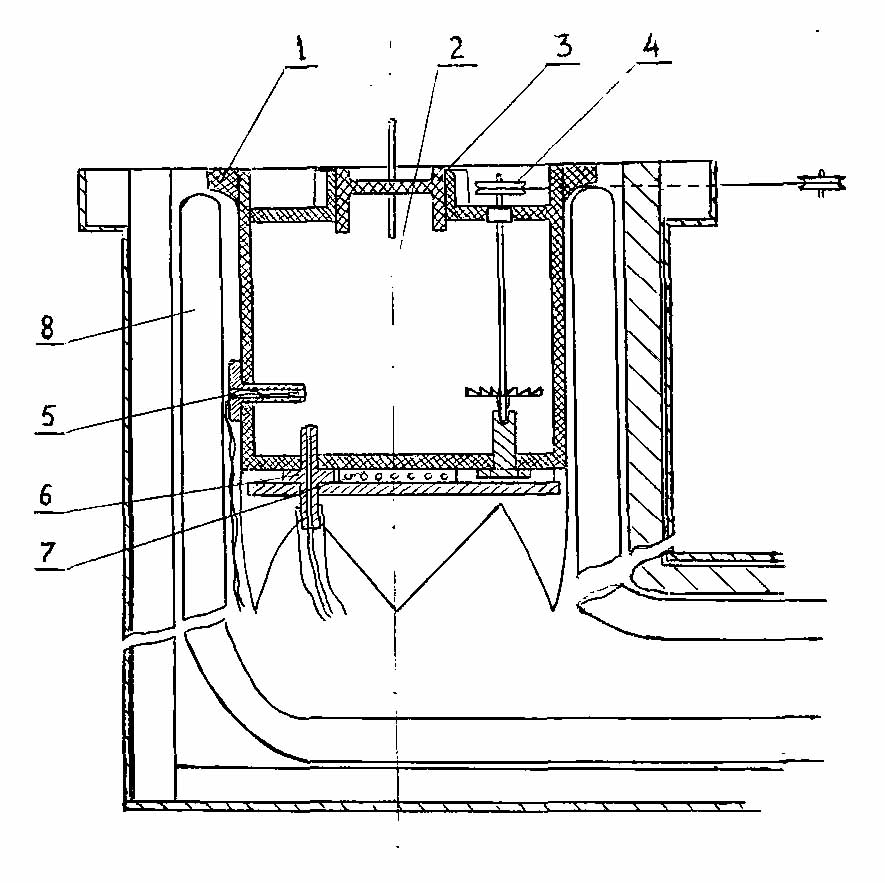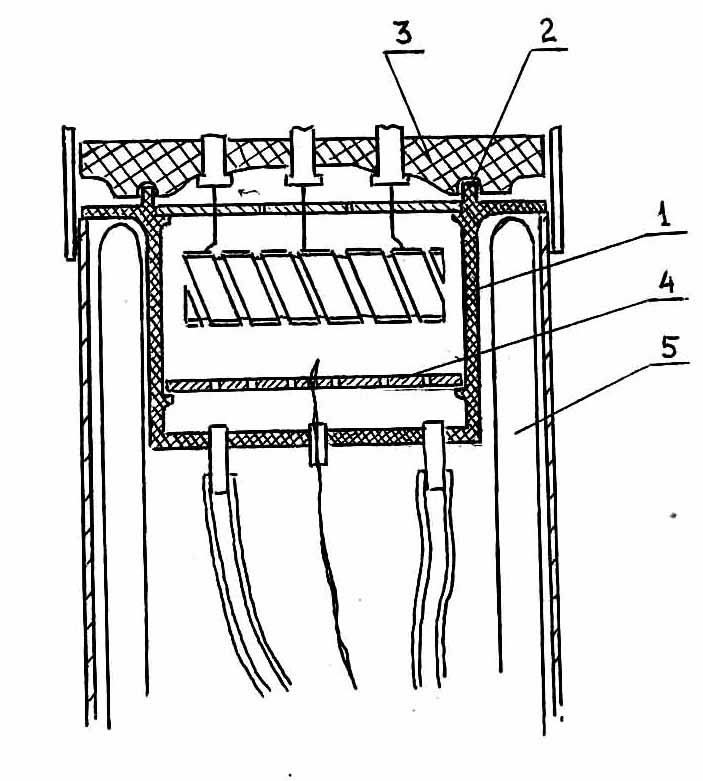SHEMETOV YEVGENY. STUDIES OF PHASE TRANSITIONS IN THE UNITED A2BX4 STRUCTURE β-K2SO4 METHOD NUCLEAR QUADRUPOLE RESONANCE
English abstract § 1.1 § 1.2 §1.3 § 1.4 § 2.1 § 2.2 §2.3 §2.4 § 3.1 § 3.2 § 3.3 § 3.4 § 4.1 § 4.2 § 4.3 § 4.4 Reference Template pdf abstract
§ 2.2 The temperature set-top spectrometer for studying phase transitions.
Standard termopristavka ISS (ИСШ) spectrometer series, the fan with the principle of mixing the gaseous medium to equalize the temperature gradient on the sample did not meet the requirements of our traditional measurements. Its disadvantage is a) a high temperature gradient to 3 K/sm; b) a great time for temperature stabilization.
The design of the heat chamber, where the heat setting is performed by blowing coolant opposite directions two-way screw channels, Rout in the copper shell, also had drawbacks, the main one of which is a large factor of the inductive-capacitive sensor relationship with NQR.
To achieve the objectives of our research the author has developed and tested new thermal cameras. Figure 2.3 shows
>
Figure 2.3. Liquid-gradient heat chamber for NQR Science.
1. The body; 2. NQR sensor; 3. Seal sensor; 4. The agitator; 5.termopara; 6. Platinum thermometer; 7. Heater; 8. Dewar.
liquid heat chamber for research NQR. The basic idea inherent in the design of the thermal cameras, is the replacement of the gas on the liquid medium, providing better heat transfer properties. The main difference lies in the design hermetically sealed housing (3) place the sample location and input axis (4a) of the fan and removing conductive material from the NQR sensor (2). For this inner housing chamber (1) was made of PTFE with a sealing compound in removable input coils NQR. Liquid completely fills the entire volume of the chamber. Small evaporation silnoletuchih replenishes fluids communicating through PTFE hose (6) to maintain the system level. Temperature sensor (5) housed in a shielded casing away from the sample. At the bottom there was a heat chamber shielded stove (7), which was used in the auxiliary heating. The whole system was placed in a standard Dewar flask, made in the form of two communicating vessels.Changing the temperature and maintaining the nitrogen purge was carried out through a tube connected to the second portion dewar. As the refrigerants used n-pentane (liquid state region 138 <T <3208K) hexane, transformer, silicone oils, glycerol (T = 600K), and other inert liquid sample. The temperature gradient in the zone of the sample out (to 0.01 K/cm).
The disadvantage is the need to change the thermal cameras or olive liquid (which could be carried out during the measurements) in different temperature ranges. At temperatures below 140K (the crystallization point of pentane), its characteristics are deteriorated. To overcome these drawbacks, chamber design required improvements. The result has been designed, tested and used in the study of phase transitions in Cs2ZnJ4 and (NH4)2ZnJ4 heat chamber shown in Figure 2.4. Its features is the use of an external circulation mode gas purge. In the first case the fluid circulates in the plane of the heat chamber (1) in the upper part of the conjugate through the sealing compound (d) directly to a bayonet flange gasket spectrometer (3). In the case of a gas purge gas (mixture) is blown through the lattice (4) promoting samoperemeshivaniyu hydrodynamic flows. Temperature range when running in automatic mode,

. Figure 2.4. Gas-liquid heat chamber NQR :. 1. The body; 2. Sealing compound; 3. Flange spectrometer; 4. Grille; 5. Thermal insulation casing; 6. Thermocouple.
determined by the characteristics of the circulation thermostat (for U-16 is 210K - 400K). Outside this range, additional stabilization of the temperature applied. The temperature gradient in the region of the sample out. Time alignment when the temperature gradient was from 2 to 10 minutes. In the gradient mode, the gas temperature at the sample was 0.1-0.2 /sm.
Minimum distance sensor NQR spectrometer to releasably nest and exclusion metallic structural elements described in thermo-console NQR allowed to achieve maximum inductive capacitive matching inductor NQR with alarm transmission paths ISSH spectrometer. Using the receiver coils with an increased (compared with standard) diameter (20 mm) allowed to increase the signal-to-noise ratio (S/N) 5-8 times.
English abstract .pdf download § 1.1 § 1.2 § 2.1 § 2.2 § 3.2.1 § 3.2.2 § 3.3 § 3.4 § 4.1.1 § 4.1.2 § 4.3 § 4. 4 References